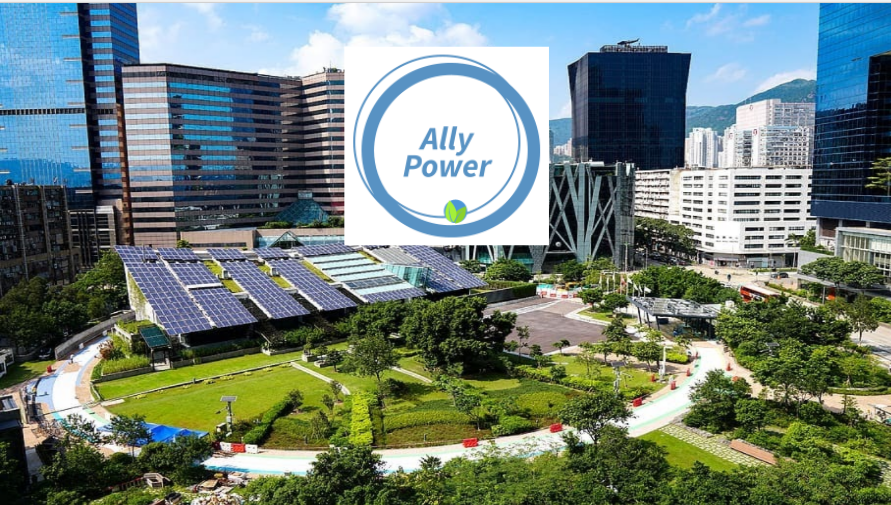Tesla fans, be sure to tune in. A startup from Hyattsville, Maryland, is developing technology for charging stations that refuel hydrogen-powered vehicles.
Less common than battery-powered or combustion-engine cars, hydrogen vehicles have their own brag-worthy traits. Using hydrogen fuel instead of gasoline, they only emit water vapor and warm air. That makes them zero emissions, and they can be fueled in about four minutes.
Ally Power is raising $40 million to get the charging stations up and running that will power the hydrogen vehicles on the road.
Founder and CEO Joseph Alfred, who’s also an appointed member of the Maryland Zero Emission Infrastructure Council, told Technical.ly that the money will be used for 12 stations — six in California and six in the DMV. Construction is expected to begin in 2021, with the first operating stations in 2022.
“What makes us different is really the ability to charge an electric battery vehicle and then also to distribute that electricity to the grid,” Alfred told Technical.ly.
Alfred founded Ally Power in 2019, and the company is currently participating in the Bethesda Green and Maryland Energy Innovation Accelerator programs.
Think of what Ally Power is building like a gas station, but for hydrogen fuel. The hydrogen is generated using a boiler system, with heat and hydrogen simultaneously produced from the chemical reaction between aluminum, water and sodium hydroxide. The heat generated from the reaction, Alfred said, is enough to power a steam turbine system and electrical generator. Along with the hydrogen for cars, this process will result in additional energy that can produce power for other uses. The team plans to use it for additional battery charging systems onsite, or send any extra back to the grid.
The initial idea, Alfred said, came from a paper he read in law school that said the process couldn’t be used to generate the energy for a car or truck. He spent the next few years trying to figure out how to take on some of the counterpoints, like how to remove the byproduct within the car, lower the price point and make the process viable.
What makes us different is really the ability to charge an electric battery vehicle and then also to distribute that electricity to the grid.
“I spent four years in the automotive industry trying to connect this idea that I had to the current use case in terms of our technology, which runs on oil, gasoline and diesel,” he said.
The big question for Alfred: “How do we transition from this very high carbon intensive transportation sector to something that is zero emissions?”
But Ally Cofounder and Government Relations Advisor Michael O’Brien said that, in the DMV, many wonder if hydrogen vehicles are necessary, given the existence of battery-powered cars, and note that there’s a lack of infrastructure for hydrogen vehicles. O’Brien said that this means there’s a “chicken and egg” problem: Should an industry wait until there’s more vehicles to develop infrastructure, or build the infrastructure and hoping the vehicles will come?
The additional power created at the stations offers a third option.
“In the business world, being able to build stations and wait for vehicles isn’t necessarily practical,” O’Brien said. “Ally Power’s ability to create that microgrid or sell back to the grid allows it to have customers at a time when hydrogen fuel cell vehicles are are going to grow.”
Although the world only saw about a 7% decrease in emissions during the pandemic, O’Brien has strong hopes for the growth of clean vehicles and removing traditional combustion-engine cars from the road.
“We saw during the pandemic how much of an impact taking cars off the road can have on the environment,” O’Brien said. “You hear over and over climate change is real and we’re getting to a point that it’s going to be irreversible. But I think we saw during the pandemic that it really is reversible. By taking these cars off the road, you’re going to have a tremendous impact.”

This editorial article is a part of Tech and the Environment Month of Technical.ly's editorial calendar.
Before you go...
Please consider supporting Technical.ly to keep our independent journalism strong. Unlike most business-focused media outlets, we don’t have a paywall. Instead, we count on your personal and organizational support.
Join our growing Slack community
Join 5,000 tech professionals and entrepreneurs in our community Slack today!

Entrepreneurship is changing, and so is the economic development behind it

Tech Hubs’ new $210M funding leaves Baltimore and Philly off the table

Here’s what to know before using AI to craft your brand’s social media posts


